|
Books Should Be Free Loyal Books Free Public Domain Audiobooks & eBook Downloads |
|
|
Books Should Be Free Loyal Books Free Public Domain Audiobooks & eBook Downloads |
|
Religion |
|---|
|
Book type:
Sort by:
View by:
|
By: L. Roy Terwilliger (?-?) | |
|---|---|
 Cuban Folk Lore
Cuban Folk Lore
The author gives a first-hand look at unusual and arguably primitive customs on the island of Cuba. He uncovers a strange and unique blend of superstitious ritual, possibly brought from Africa by slaves, and Catholic religious ceremony, introduced by missionaries. | |
By: L. W. Rogers (1859-1953) | |
|---|---|
 Elementary Theosophy
Elementary Theosophy
This book provides the basics of Theosophy and perhaps the beginning of a life long journey. Theosophy comes from the ancient wisdom that man and nature are as inseparable from the universe as the universe is inseparable from man and nature. It is a science and a philosophy, not a religion which depends on (dogma) faith. Knowledge gained through the study of Theosophy comes from the understanding of natural laws and harmony of the universe. Rogers shows us why we cannot separate ourselves from God (universe); the evolution of the soul; rebirth after physical death; why we don’t remember past lives and much more... | |
By: Lafcadio Hearn (1850-1904) | |
|---|---|
 Japan: An Attempt at Interpretation
Japan: An Attempt at Interpretation
Greece-born Lafcadio Hearn (1850 - 1904) spent decades of his life in Japan, even marrying a Japanese woman, thus becoming a Japanese citizen by the name of Koizumi Yakumo (小泉 八雲). He wrote many books on Japan, especially about its folklore. In this posthumously published book, he takes a closer look at Japan's religious history: How it developed from ancient beliefs into Shintoism, resisted suppression attempts by both Buddhism and Christianity and how – despite efforts to westernise Japan during the era known as Meiji Restoration – it remained the basis for Japanese society... | |
By: Laozi | |
|---|---|
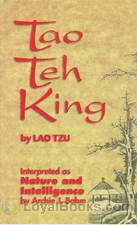 The Tao Teh King, or the Tao and its Characteristics
The Tao Teh King, or the Tao and its Characteristics
Written in classical Chinese some time during the sixth century BC, The Tao Teh King or The Tao and its Characteristics is a classical Chinese text that is one of the important keystones in understanding the thought systems of Asia. Though no clear records exist, it is traditionally thought to have been the work of the sage Lao Tzu, the founder of classical Taoism. He is reputed to have been a contemporary of Confucius, though this is also shrouded in mystery. However, many succeeding emperors and dynasties have claimed that he lived in their eras... | |
By: Leo The Great | |
|---|---|
 Sermons of Leo the Great, Bishop of Rome
Sermons of Leo the Great, Bishop of Rome
Leo the Great was unanimously elected Bishop of Rome on September 29, 440 a.d. At the Council of Chalcedon, his famous "Tome" was a decisive contribution to the Christological controversies of the fifth century. But the Tome did not stand alone. It was written in the context of over two decades of pastoral sensitivity. This collection of sermons is the best way to let Leo himself unpack the nuances and power of Chalcedonian Christology according to one of its most influential proponents. (Introduction by Jonathan Lange) | |
By: Leo Tolstoy (1828-1910) | |
|---|---|
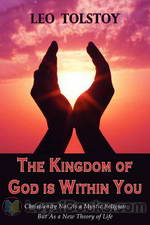 The Kingdom of God is within you
The Kingdom of God is within you
The title of the book comes from Luke 17:21. It is a non-fiction work of the famous Russian author Leo Tolstoy. He wrote it after many years of reflexion on Christianity and Jesus. Many subjects are present such as wars, non-violence, misunderstanding by believers of the faith, etc. | |
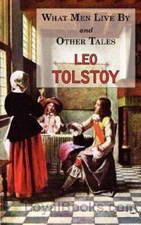 What Men Live By and Other Tales
What Men Live By and Other Tales
Although Leo Tolstoy (1828-1910) was a wealthy landowner, in his later life he had what was considered a “religious awakening.” This experience went on to inform his writing and his lifestyle in profound ways. His views transcended the specifics of religion, as known in his day – so much so he came to be a helpful guide both to Mohandas Gandhi and to Dr. Martin Luther King Jr. The four stories in this collection ask profound questions and gently supply helpful, non-dogmatic hints to their... | |
 What I Believe
What I Believe
"The inner working of my soul, which I wish to speak of here, was not the result of a methodical investigation of doctrinal theology, or of the actual texts of the gospel; it was a sudden removal of all that hid the true meaning of the Christian doctrine – a momentary flash of light, which made everything clear to me. It was something like that which might happen to a man who, after vainly attempting, by a false plan, to build up a statue out of a confused heap of small pieces of marble, suddenly... | |
 Bethink Yourselves!
Bethink Yourselves!
As Russia goes to war against Japan, Tolstoy urges those at all levels of society, from the Tsar down to the common soldier, to consider their actions in the light of Christ's teaching. "However strange this may appear, the most effective and certain deliverance of men from all the calamities which they inflict upon themselves and from the most dreadful of all—war—is attainable, not by any external general measures, but merely by that simple appeal to the consciousness of each separate man which, nineteen hundred years ago, was proposed by Jesus—that every man bethink himself, and ask himself, who is he, why he lives, and what he should and should not do... | |
 Gospel In Brief
Gospel In Brief
In this book, Tolstoy seeks to condense the four Gospels of the New Testament, Matthew, Mark, Luke and John, into one, by looking along the lines of the teachings of Jesus Christ found in each book. In doing so, he discovers that the Lord's Prayer is the best summation of all that Christ taught in the Gospels. | |
 Confession (Version 2)
Confession (Version 2)
Leo Tolstoy's "A Confession," written in 1882 shortly after a life-altering spiritual crisis, is a brutally sincere reflection on life, morality, and the nature of faith. Tolstoy describes in great detail the process by which he lost his faith in established Christian churches, the meaninglessness of wealth and fame, the agony of acute depression, and how he overcame misery and dread through personal study of the teachings of Jesus Christ. Along the way, he contrasts the artificial faith and arrogance of educated people with the genuine faith and humility of the Russian peasant... | |
 Critique of Dogmatic Theology
Critique of Dogmatic Theology
More systematic, but no less sincere than A Confession , The Critique of Dogmatic Theology is an early attempt on the part of Tolstoy to impart the results of his meticulous study and fearless inquiry into the beliefs and traditions of Orthodox Christianity following his renewed interest in spirituality. - Summary by Paul Rizik | |
By: Lewis Hodus (1872-1949) | |
|---|---|
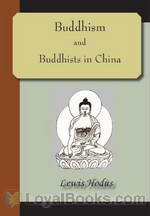 Buddhism and Buddhists in China
Buddhism and Buddhists in China
Buddhism and Buddhists in China is an anthropological text describing Buddhism as practiced in China at the beginning of the 20th Century. Interestingly, it also compares and contrasts Buddhism with Christianity with respect to or in response to missionary work. | |
By: Logan Marshall | |
|---|---|
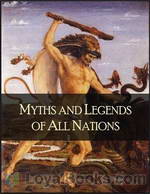 Myths and Legends of All Nations
Myths and Legends of All Nations
This excellent book contains many great stories from the various mythologies of man throughout the ages. | |
 Wonder Book of Bible Stories
Wonder Book of Bible Stories
It is with the desire of aiding parents and teachers in telling these stories, and aiding children to understand them, also in the hope that they may be read in many schools, that a few among the many interesting stories in the Bible have been chosen, brought together and as far as necessary simplified to meet the minds of the young. - Introduction by Jesse Lyman Hurlbut inside the book itself. | |
By: Lord Alfred Tennyson (1809-1892) | |
|---|---|
 Beauties of Tennyson
Beauties of Tennyson
A collection of Tennyson's poetry : 1 The Brook - 00:16 2 Song from "Maud" - 1:20 3 A Farewell - 2:34 4 Song from “Maud” - 3:26 5 Break, Break, Break - 4:53 6 From “Locksley Hall”- 5:43 7 Song from “Maud” - 6:43 8 Song from “The Princess” - 7:43 9 Lillian - 8:37 10 Ring out, Wild Bells - 9:52 11 From “The Princess” - 11:27 12 Song From “The Princess” - 12:43 13 From “Enoch Arden” - 13:58 14 From “Enoch Arden” - 15:36 15 The Charge of the Light Brigade- 16:56 16 From “The May Queen” - 18:51 17 Song from “The Princess” - 19:36 18 From “Harold” - 20:14 19 From “The Revenge” - 21:28 (From Sam Stinsson) | |
By: Louis Albert Banks (1855-1933) | |
|---|---|
 Christ and His Friends
Christ and His Friends
This is a series of sermons that were given in Hanson Place Methodist Episcopal Church in January 1895. They are here collected together by the author and presented "with the earnest prayer that they may bring comfort and inspiration to the friends of Christ wherever they may go." - Summary by Devorah Allen | |
 Year's Prayer-Meeting Talks
Year's Prayer-Meeting Talks
This is a series of 52 talks, all of which were delivered by Rev. Banks in the First Methodist Episcopal Church of Cleveland, Ohio on a weekly basis over the course of one year. They are here compiled and published by the author "with the prayer and hope that in suggestive and illustrative material they may be of service and blessing." - Summary by Devorah Allen | |
 David and His Friends: A Series of Revival Sermons
David and His Friends: A Series of Revival Sermons
This is a collection of thirty-one revival sermons, all of which were preached in the First Methodist Episcopal Church, Cleveland, Ohio, during the month of January, 1900. They were then collected and published, in order to be an inspiration and a help in the work of winning souls to Christ. - Summary by Devorah Allen, adapted from preface | |
 Great Sinners of the Bible
Great Sinners of the Bible
This is a collection of sermons which were preached in the First Methodist Episcopal Church in Cleveland, Ohio, during the autumn and winter or 1898 and 1899. They were all delivered during evening services, and therefore, as the author explains, were intended as messages to sinners, not to Christians. - Summary by Devorah Allen | |
By: Louis Gaston de Segur (1820-1881) | |
|---|---|
 Familiar Instructions and Evening Lectures on All the Truths of Religion, Volume 1
Familiar Instructions and Evening Lectures on All the Truths of Religion, Volume 1
Brief instruction on numerous subjects pertaining to the Catholic faith, the Sacraments, the Ten Commandments and more. | |
 Familiar Instructions and Evening Lectures on All the Truths of Religion, Volume 2
Familiar Instructions and Evening Lectures on All the Truths of Religion, Volume 2
Brief instruction on numerous subjects pertaining to the Catholic faith. In this second volume of two, it continues on with the Commandments of the Church, virtues, prayer, the Mass, stories from Our Lord's life, saints and more! | |
By: Louis Ginzberg (1873-1953) | |
|---|---|
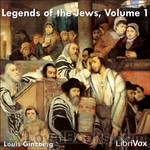 Legends of the Jews
Legends of the Jews
Rabbi Louis Ginzberg was one of the outstanding Talmudists of the twentieth century. He was born on November 28, 1873, in Kovno, Lithuania; he died on November 11, 1953, in New York City. Ginzberg taught at the Jewish Theological seminary from 1903 to 1953. For 50 years, he trained two generations of Conservative Rabbis.The Legends of the Jews is an epic 7-volume compilation of traditional Jewish stories loosely related to the Bible. Volumes 1-4 contain the stories, while volumes 5-7 contain Ginzberg’s notes and commentary... | |
By: Louis Laravoire Morrow (1892-1987) | |
|---|---|
 My Bible History: Old Testament
My Bible History: Old Testament
A short, simple Old Testament Bible History for children, but which can also be enjoyed by adults alike. Starting with Creation, the sections cover Adam and Eve, Abraham, Moses, etc. up to the promise of a Redeemer. The same format continues in the volume that follows - My Bible History: New Testament - by the same author. | |
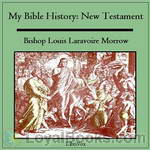 My Bible History: New Testament
My Bible History: New Testament
A short, simple New Testament Bible History for children, but which can also be enjoyed by adults alike. Starting with St. John the Baptist, and running through the beginning years of the Church, the sections cover Our Lord's birth, public life, miracles, death, resurrection and more. This is the companion volume to My Bible History: New Testament - by the same author. | |
By: Ludwig Feuerbach (1804-1872) | |
|---|---|
 The Essence of Christianity
The Essence of Christianity
Taking issue with Hegel’s sense that God, as Logos, is somehow central to all that is, Feuerbach explores his own notion that Christianity, as religion, grew quite naturally from ordinary human observation. Only upon deeper, systematic reflection did people postulate a divine source–God. Religious teaching which loses sight of its own essential rootedness in human experience runs the risk becoming overly abstract, disconnected even, from realities which shape humanity and which impart meaning and dignity to life... | |
By: Lyman Abbott (1835-1922) | |
|---|---|
 Parables
Parables
This is a collection of the parables of the new testament. - Summary by Lynda Marie Neilson | |
 Darkness and Daylight; or, Lights and Shadows of New York Life
Darkness and Daylight; or, Lights and Shadows of New York Life
A Pictorial Record of Personal Experiences by Day and Night in the Great Metropolis, with hundreds of thrilling anecdotes and incidents, sketches of life and character, humorous stories, touching home scenes, and tales of tender pathos, drawn from the bright and shady sides of the great under world of New York. By Mrs. Helen Campbell, City Missionary and Philanthropist; Col. Thomas W. Knox, Author and Journalist; and Supt. Thomas Byrnes, Chief of NY Police and Detectives. With highly interesting descriptions of little known phases of New York life; and an account of Detective Byrnes' thirty years' experiences and reminiscences written by himself from his private diary... | |
By: M. M. Mangasarian (1859-1943) | |
|---|---|
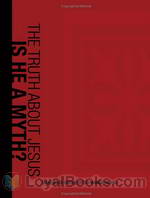 The Truth About Jesus. Is He a Myth?
The Truth About Jesus. Is He a Myth?
The following work offers in book form the series of studies on the question of the historicity of Jesus, presented from time to time before the Independent Religious Society in Orchestra Hall, Chicago, 1909. No effort has been made to change the manner of the spoken, into the more regular form of the written, word. | |
By: Mabel Collins (1851-1927) | |
|---|---|
 Light on the Path
Light on the Path
When Light on the Path was first published in 1885, it became an important work for Theosophists and has remained so ever since. It offers advice for those who wish to follow a spiritual way of living, set out point by point in short sections for the reader. This edition also includes a chapter on karma to provide further guidance for the student of esoteric knowledge. | |
By: Margaret Dunlop Gibson (1843-1920) | |
|---|---|
 How the Codex Was Found
How the Codex Was Found
"The narrative of these two journeys is of special interest, because the first one, that made by my twin sister, Mrs. Lewis, and myself, in 1892, led to the discovery of an early and important codex of ancient Syriac gospels... while that made by us this year in company with [more Cambridge scholars and their wives] was undertaken for the purpose of deciphering the precious manuscript to which we have alluded. "Abler pens than mine will write about these Syriac gospels... yet on me devolves the task of telling how the codex was found... | |
By: Margaret S. Comrie (1851-?) | |
|---|---|
 Key to the Riddle
Key to the Riddle
Young Azerole Montoux and her brother Leon find themselves separated from their family by the religious persecutions of 1686. Threatened by the authorities and forced to depend on strangers, they must decide whether they can trust God to make sense out of the riddle of their lives. | |
By: Maria W. Stewart (1803-1879) | |
|---|---|
 Meditations from the Pen
Meditations from the Pen
Maria W. Stewart was America's first black woman political writer. Between 1831 and 1833, she gave four speeches on the topics of slavery and women's rights. Meditations From The Pen of Mrs. Maria W. Stewart—published in 1879 shortly before her death—is a collection of those speeches as well as her memoir, some meditations and prayers. They are political, poetical and sermon all at the same time; but in the mileu in which she lectured, they were a critically important part of the abolitionist movement years before the contributions of others such as Frederick Douglass and Sojourner Truth... | |
By: Marie Corelli (1855-1924) | |
|---|---|
 A Romance of Two Worlds
A Romance of Two Worlds
A Romance of Two Worlds starts with a young heroine telling her story of a debilitating illness that includes depression and thoughts of suicide. Her doctor is unable to help her and sends her off on a holiday where she meets a mystical character by the name of Raffello Cellini, a famous Italian artist. Cellini offers her a strange potion which immediately puts her into a tranquil slumber, in which she experiences divine visions. | |
By: Mark Antony De Wolfe Howe (1864-1960) | |
|---|---|
 Phillips Brooks
Phillips Brooks
Phillips Brooks (1835 - 1893) was one of the finest and most famous clergyman in the nineteenth century; he was acknowledged as a masterful preacher. His teachings were filled with understanding, compassion, and encouragement. He spent most of his life as rector of Trinity Church, Boston, and served briefly as Episcopal bishop of Massachusetts at the end of it (1891 - 1893). His life was a course of gaining an increasing name as preacher and patriot. In addition to his moral stature, he was a man of great physical bearing as well, standing six feet four inches tall... | |
By: Mark Twain (1835-1910) | |
|---|---|
 Personal Recollections of Joan of Arc, Volumes 1 & 2
Personal Recollections of Joan of Arc, Volumes 1 & 2
Mark Twain’s work on Joan of Arc is titled in full “Personal Recollections of Joan of Arc, by the Sieur Louis de Conte.” De Conte is identified as Joan’s page and secretary. For those who’ve always wanted to “get behind” the Joan of Arc story and to better understand just what happened, Twain’s narrative makes the story personal and very accessible. The work is fictionally presented as a translation from the manuscript by Jean Francois Alden, or, in the words of the published book, “Freely Translated out of the Ancient French into Modern English from the Original Unpublished Manuscript in the National Archives of France... | |
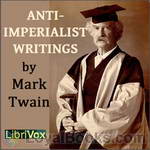 Anti-imperialist writings
Anti-imperialist writings
This audiobook is a collection of Mark Twain's anti-imperialist writings (newspaper articles, interviews, speeches, letters, essays and pamphlets). | |
 Christian Science
Christian Science
Christian Science is a 1907 collection of essays Mark Twain wrote about Christian Science, beginning with an article that was published in Cosmopolitan in 1899. Although Twain was interested in mental healing and the ideas behind Christian Science, he was hostile towards its founder, Mary Baker Eddy . He called her, according to American writer Caroline Fraser, "[g]rasping, sordid, penurious, famishing for everything she sees—money, power, glory—vain, untruthful, jealous, despotic, arrogant, insolent, pitiless where thinkers and hypnotists are concerned, illiterate, shallow, incapable of reasoning outside of commercial lines, immeasurably selfish... | |
By: Martha Finley (1828-1909) | |
|---|---|
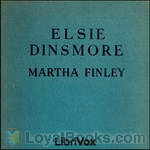 Elsie Dinsmore
Elsie Dinsmore
Elsie, young and motherless, has never met her father and is being raised by her father’s family. As a strong Christian, she has many trials within the unbelieving family. Her greatest comforts are her faith and her mammy, Chloe. Finally, her father returns home. Will her father love her? Will her father learn to love Jesus? | |
 Holidays at Roselands
Holidays at Roselands
This is the second book of the much loved Elsie Dinsmore series and starts where the first book left off. Elsie is still recuperating from her weakness, with her kind and indulgent father by her side.The story revolves around how a strong bond of love and understanding takes root between the father and daughter, as they holiday at Roselands, and visit exciting places, with some of our favorite friends from the first book, Mr. Travilla, Adelaide, Chloe, Lora and the others. | |
 Elsie's Girlhood
Elsie's Girlhood
In the third book of Martha Finley's much-loved Elsie Dinsmore series, Elsie's life is traced from the tender age of 12 or 13 to the mature age of 21. Her life is not all sunshine and roses, but she is secure in the love of the Lord and her family. | |
 Elsie's Womanhood
Elsie's Womanhood
The fourth book in the Elsie Dinsmore series, Elsie grows into a young woman. She marries her father's old friend, Edward Travilla, and together start a family. The latter half of the book occurs during the Civil War. | |
 Elsie's Motherhood
Elsie's Motherhood
After the Civil War, Elsie and her family return to their home in the South, dealing with the upheaval that the Reconstruction Era brought during the years after the war. | |
 Elsie's Children
Elsie's Children
This book continues the delightful "Elsie Dinsmore" series. Elsie's children, introduced in the previous volume, live life, grow up, and encounter various problems of their own. Additional Proof Listeners: AlaynaMay & Rachel. | |
 Elsie's Widowhood
Elsie's Widowhood
The seventh in the Elsie Dinsmore series, this book begins with the death of Elsie's beloved husband. As Elsie learns to live in widowhood, the story shifts to the lives of those most precious to her - her children and extended family. | |
 Grandmother Elsie
Grandmother Elsie
Change has come to Elsie's family in the 8th book of this delightful series. Her daughter, Violet, marries a naval Captain with three children of his own and the children try to adjust to life with their new step-mother and her family. - Summary by Gabrielle C | |
 Mildred Keith
Mildred Keith
Mildred Keith has a good life in Lansdale, Ohio - family, friends and school keep her happy and busy. But when her parents announce they're all moving to Indiana, Mildred's faith is tested beyond anything she could have imagined. Through good times and bad, follow Mildred and her family as they learn to rely on the Lord for strength in every circumstance! This project was proof-listened by Adele de Pignerolles and Linette Geisel. - Summary by Rachel | |
 Mildred at Roselands
Mildred at Roselands
In order to recover her health, Mildred Keith goes to visit her mother's extended family, the Dinsmores, in the South. Mildred makes new friends while at Roselands, learns important lessons and grows in her faith in Christ. | |
 Ella Clinton
Ella Clinton
The Story of Ella Clinton who regardless of her desire to be good is ruled by her passions. Then one day she submits her desires to the only source of good - Almighty God. She is known to be His child by her fruits, for "By Their Fruits Ye shall know them". - Summary by Michelle Hannah | |
By: Martin Luther (1483-1546) | |
|---|---|
 The Large Catechism
The Large Catechism
Luther’s Large Catechism consisted of works written by Martin Luther and compiled Christian canonical texts, published in April of 1529. This book was addressed particularly to clergymen to aid them in teaching their congregations. Luther’s Large Catechism is divided into five parts: The Ten Commandments, The Apostles’ Creed, The Lord’s Prayer, Holy Baptism, and The Sacrament of the Altar. It and related documents was published in The Book of Concord in 1580. | |
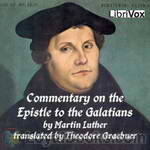 Commentary on St. Paul's Epistle to the Galatians
Commentary on St. Paul's Epistle to the Galatians
Martin Luther strove to give a verse by verse exegesis of the Epistle to the Galatians in the work. The original work, written in Latin in around 1516, was much longer. This translation by Theodore Graebner (1876-1950) strove to produce a copy of the work in a format and with wording much more applicable to the general English-speaking American public. | |
 The Small Catechism
The Small Catechism
Luther's Small Catechism (Der Kleine Katechismus) was written by Martin Luther and published in 1529 for the training of children. Luther's Small Catechism reviews The Ten Commandments, The Apostles' Creed, The Lord's Prayer, The Sacrament of Holy Baptism, The Office of the Keys & Confession, and The Sacrament of the Eucharist. It is included in the Lutheran Book of Concord as an authoritative statement of what Lutherans believe. The Small Catechism is widely used today in Lutheran churches as part of youth education and Confirmation. | |
 The Smalcald Articles
The Smalcald Articles
MANUAL OF SURGERY, OXFORD MEDICAL PUBLICATIONSBY ALEXIS THOMSON, F.R.C.S.Ed.PREFACE TO SIXTH EDITION Much has happened since this Manual was last revised, and many surgical lessons have been learned in the hard school of war. Some may yet have to be unlearned, and others have but little bearing on the problems presented to the civilian surgeon. Save in its broadest principles, the surgery of warfare is a thing apart from the general surgery of civil life, and the exhaustive literature now available on every aspect of it makes it unnecessary that it should receive detailed consideration in a manual for students... | |
 The Bondage of the Will
The Bondage of the Will
On the Bondage of the Will (Latin: 'De Servo Arbitrio', literally, "On Un-free Will", or "Concerning Bound Choice"), by Martin Luther, was published in December 1525. It was his reply to Desiderius Erasmus's De libero arbitrio diatribe sive collatio or On Free Will, which had appeared in September 1524 as Erasmus's first public attack on Luther, after being wary about the methods of the reformer for many years. At issue was whether human beings, after the Fall of Man, are free to choose good or evil. The debate between Luther and Erasmus is one of the earliest of the Reformation over the issue of free will and predestination. | |
 Concerning Christian Liberty
Concerning Christian Liberty
Early in the course of the Reformation (1520) Martin Luther penned a trilogy of foundational documents addressing the Church, the Nobility and the Christian life. This document concerning the Christian life expounds the famous paradox: "A Christian man is the most free lord of all, and subject to none; a Christian man is the most dutiful servant of all, and subject to every one." | |
 On the Babylonian Captivity of the Church
On the Babylonian Captivity of the Church
Early in the course of the Reformation (1520) Martin Luther penned a trilogy of foundational documents addressing the German Nobility, the Church and the Christian. "On the Babylonian Captivity of the Church" appeared second. In it, Luther sifts the wheat from the chaff as regards the seven sacraments of the Roman Church. | |
 Exposition upon the Song of the Blessed Virgin Mary called Magnificat
Exposition upon the Song of the Blessed Virgin Mary called Magnificat
Luther's 1521 exposition of the Magnificat was written for John Frederick I, Elector of Saxony , at that time a teenager. It was written in two parts, being interrupted by Luther's appearance at the Diet of Worms. It is sermonic in form but written to be read rather than heard. - Summary by InTheDesert | |
By: Mary Baker Eddy (1821-1910) | |
|---|---|
 The People's Idea of God
The People's Idea of God
“The improved theory and practice of religion and of medicine are mainly due to the people’s improved views of the Supreme Being.” (from The People’s Idea of God) | |
By: Mary E. Mannix | |
|---|---|
 Child's Life of St. Joan of Arc
Child's Life of St. Joan of Arc
A biography of Saint Joan of Arc, geared towards children, but also can easily be enjoyed by adults. | |
By: Mary Esther Miller MacGregor (1876-1961) | |
|---|---|
 Black-Bearded Barbarian
Black-Bearded Barbarian
A fictionalized biography of George Mackay (1844-1901), an influential Presbyterian missionary in northern Taiwan. | |
By: Mary Martha Sherwood (1775-1851) | |
|---|---|
 Fairchild Family
Fairchild Family
The adventures of Lucy, Emily and Henry are described in this short novel, written and set in Regency England. Their naughtiness, their activities and their interactions with the children next door; Miss Augusta and Charles Trueman, are all delightfully described. Their daily lives are an insight into childhood and the family and religious values at the time - each chapter has a moral lesson, and the good end happily, while the bad get what they deserve. | |
By: Mary Sidney Herbert (1561-1621) | |
|---|---|
 Psalmes of David (Sidney Psalms)
Psalmes of David (Sidney Psalms)
A poetic version of the Psalms by Sir Philip Sidney and his sister, Mary Sidney Herbert, the Countess of Pembroke . "It is possible that the original Autograph manuscript of Sir Philip Sidney may still exist in the library at Wilton. It would have been desirable to have ascertained this, as it might prove which were versified by him, and which by his sister. This I have not been able to accomplish." Some of the Psalms may have been written by a third party. The Christian Remembrancer magazine for June, 1821 contains a paper by Dr... | |
By: Max Heindel (1865-1918) | |
|---|---|
 The Rosicrucian Mysteries
The Rosicrucian Mysteries
A primer for those interested in the basic philosophy, beliefs & secrets of the Rosicrucians. | |
By: Maximilian Schele De Vere (1820-1898) | |
|---|---|
 Modern Magic
Modern Magic
M. Schele de Vere was born in Sweden in 1820 and studied language in Germany before eventually becoming a professor of modern language at the University of Virginia in 1844 where he would teach for more than 50 years. During his time as a professor, he would write many books, mostly focusing on language. One of his last works, being first published in 1873, "Modern Magic" instead focuses on the occult. From the preface: "The main purpose of our existence on earth—aside from the sacred and paramount... | |
By: Meister Eckhart (1260-1327) | |
|---|---|
 Meister Eckhart's Sermons: First Time Translated into English
Meister Eckhart's Sermons: First Time Translated into English
"If a piece of wood became as aware of the nearness of God as an archangel is, the piece of wood would be as happy as an archangel." This is a collection of seven sermons of Meister Eckhart, the German medieval scholastic philosopher-theologian, which were translated by Claude Field and published with a Preface in approximately 1909. The publication was titled Heart and Life Booklets. No. 22, and published in London by H. R. Allenson, Ltd. / Racquet Court, 111 Fleet Street, E.C. | |
By: Mikhail Bakunin (1814-1876) | |
|---|---|
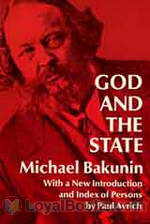 God and the State
God and the State
Bakunin’s most famous work, published in various lengths, this version is the most complete form of the work published hitherto. Originally titled “Dieu et l’état”, Bakunin intended it to be part of the second portion to a larger work named “The Knouto-Germanic Empire and the Social Revolution” (Knouto-Germanic Empire is in reference to a treaty betwixt Russia and Germany at the time), but the work was never completed. (from book introduction) | |
By: Mildred Duff (1860-1932) | |
|---|---|
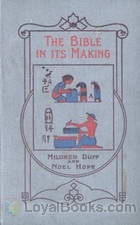 The Bible in Its Making - The Most Wonderful Book in the World
The Bible in Its Making - The Most Wonderful Book in the World
One great universal law runs through the realm of nature. Our Saviour gave it in a sentence: 'First the blade, then the ear, after that the full corn in the ear.' It is with the desire to show that the same law rules in another of God's creations — The Bible — that this little volume has been prepared. The Bible has as literally 'grown' as has an oak tree; and probably there is no more likeness between the Bible as we know it to-day and its earliest beginning, than we find between the mighty tree, and the acorn from which it sprang... | |
By: Minot Judson Savage (1841-1918) | |
|---|---|
 Unitarian Catechism
Unitarian Catechism
This is a brief catechism of common Unitarian beliefs. As with most catechisms, the material is presented in a question and answer form. - Summary by KevinS | |
By: Mírzá Abu’l-Fadl Gulpáygání (1844-1914) | |
|---|---|
 The Brilliant Proof (Burhäne Lämé) in reply to an attack upon the Bahai Revelation by Peter Z. Easton
The Brilliant Proof (Burhäne Lämé) in reply to an attack upon the Bahai Revelation by Peter Z. Easton
“In these days,” writes the renowned Bahá’í scholar, Mírzá Abu’l-Fadl, “which are the latter days of 1911, A. D. and the early days of 1330 A. H., I have seen a curious article which astonished me. What did I see? I find that one of the missionaries of the Protestant sect, who accounts himself among the learned men of the twentieth century, a helper of the pure religion of Christ and one of the civilized and cultured occidentals, by name, Peter Z. Easton, has been so provoked by jealousy... | |
 Brilliant Proof (Burhäne Lämé) in reply to an attack upon the Bahai Revelation by Peter Z. Easton
Brilliant Proof (Burhäne Lämé) in reply to an attack upon the Bahai Revelation by Peter Z. Easton
“In these days,” writes the renowned Bahá’í scholar, Mírzá Abu’l-Fadl, “which are the latter days of 1911, A. D. and the early days of 1330 A. H., I have seen a curious article which astonished me. What did I see? I find that one of the missionaries of the Protestant sect, who accounts himself among the learned men of the twentieth century, a helper of the pure religion of Christ and one of the civilized and cultured occidentals, by name, Peter Z. Easton, has been so provoked by jealousy... | |
By: Moses Maimonides (1138-1204) | |
|---|---|
 Guide for the Perplexed, Part One
Guide for the Perplexed, Part One
The Guide for the Perplexed by Mūsá ibn Maymūn is regarded as one of the most important works of Medieval Jewish thought. The book attempted to harmonize the philosophy of Aristotle with the Rabbinical teachings, but was regarded by many at the time as antithetical to Jewish theology, despite its earnest arguments in vindication of the ways of God. - Summary by Daniel Davison | |
By: Mrs. O. F. Walton (1849-1939) | |
|---|---|
 A Peep Behind the Scenes
A Peep Behind the Scenes
Rosalie is the daughter of a traveling theater master and is envied by many young girls as she appears to live a life full of glamour, glitz, and glory. But beneath the happy smiling face is a hurting heart, a deep sorrow for her dying mother, and a wretched life. Follow Rosalie as she learns of the Good Shepherd who loves and cares for her, and begins to trust Him for daily strength. | |
 Christie's Old Organ
Christie's Old Organ
Christie is all alone in the world after his mother dies. He lives in a boarding house and every night creeps up the attic stairs to hear an old barrel organ play. One night while he is listening, the organ stops and Christie hears a thump. What has happened? What should Christie do? | |
 Poppy's Presents
Poppy's Presents
One day, Poppy gets told her mother has a present for her. But the neighbors laugh and say there is such a thing as too much of a good thing. What is the present? | |
By: Mrs. Robert Hoskins (1837-1916) | |
|---|---|
 Clara A. Swain, M.D.
Clara A. Swain, M.D.
This is a brief biography of Clara A. Swain, M.D. who is regarded as the "first Medical Missionary to the Women of the Orient." She graduated from the Woman's Medical College in Philadelphia and was sent out to India where she eventually came to be in the service of royalty. | |
By: Myles Endicott | |
|---|---|
 Stories of the Bible, Volume 1: The People of the Chosen Land
Stories of the Bible, Volume 1: The People of the Chosen Land
Brief Bible stories from the Old Testament, many accompanied by poems. - Summary by Larry Wilson | |
By: Nagarjuna | |
|---|---|
 She-rab Dong-bu (The Tree of Wisdom)
She-rab Dong-bu (The Tree of Wisdom)
The She-rab Dong-bu (Tree of Wisdom) is a metrical translation in Tibetan of a Sanscrit ethical work entitled Prajnya Danda, written by Nagarjuna who flourished in the fourth century of the Buddhist era (about 100 B.C.), The Tibetan version was probably made about the 11th century of our era but the exact date has not been determined. It is included in the Ten-gyur, ངོ་ section, volume གོ་, beginning at leaf 165. The Tibetan translator describes it as the second volume but I cannot say whether the remainder of the work has been preserved in Tibetan – the Sanscrit original is apparently lost. | |
By: Nathan Solomon Joseph (1834-1919) | |
|---|---|
 Israel's Faith
Israel's Faith
A series of short readings for Jewish youth and others. This book ought not to be viewed as a kind of catechism, but the author and editor offer helpful perspectives on Jewish belief. - Summary by KevinS | |
By: Nicolas Notovitch (1858-?) | |
|---|---|
 The Unknown Life of Jesus Christ
The Unknown Life of Jesus Christ
The New Testament describes the life of Jesus, but nothing is said of his life between the ages of 14 and 29. Notovitch, like so many historians, tries to find evidence of what happened to Jesus during those years. He claims to have found the answer in an old document describing the life of Saint Issa. "The Unknown Life of Jesus Christ" is a copy of the manuscript along with Notovitch's reflections on his findings. It will take you on a journey to an unexpected land, linking people, cultures and religions you wouldn't dream of linking. | |
By: Norman F. Langford | |
|---|---|
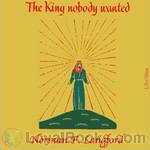 The King Nobody Wanted
The King Nobody Wanted
In a very real and interesting way, The King Nobody Wanted tells the story of Jesus. Where the actual words of the Bible are used, they are from the King James Version. But the greater part of the story is told in the words of every day. (Introduction by N. F. Langford) | |
By: Oliver Optic (1822-1897) | |
|---|---|
 Rich and Humble; The Mission of Bertha Grant
Rich and Humble; The Mission of Bertha Grant
This is the first story in the Woodville collection of tales about the interesting people in Woodville. As the characters grow, they learn many lessons. This is the story of Bertha Grant and her brother, Richard Grant. One of these siblings is good and wise living their life for a higher purpose. The other has to overcome many trials to learn what is truly important in life. The second story in the series is entitled In School and Out; The Conquest of Richard Grant. Summary by Scarlett Martin Woodville... | |
 Watch and Wait; The Young Fugitives
Watch and Wait; The Young Fugitives
One soft summer evening, when Woodville was crowned with the glory and beauty of the joyous season, three strangers presented themselves before the Grant family, and asked for counsel and assistance. The party consisted of two boys and a girl, and they belonged to that people which the traditions of the past have made the "despised race;" but the girl was whiter and fairer than many a proud belle who would have scorned her in any other capacity than that of a servant; and one of the boys was very nearly white, while the other was as black as ebony undefiled... | |
By: Omar Khayyám (1048-1131) | |
|---|---|
 Quatrains of Omar Khayyam of Nishapur
Quatrains of Omar Khayyam of Nishapur
In 1906, Eben Francis Thompson,scholar and poet, published a limited edition of his translation of the Quatrains of Omar Khayyam. This edition contains 878 quatrains, and represents the most extensive translation of Omar's rubai in any language.In the Introduction, Nathan Haskell Dole writes: Mr Thompson has put into English verse this whole body of Persian poetry. It is a marvel of close translation, accurate and satisfactory. He has succeeded in doing exactly what he set out to do - to add nothing and to take nothing away, but to put into the typical quatrain, as determined by Fitzgerald and others, exactly what Omar and his unknown imitators said. | |
By: Origen of Alexandria (184-253) | |
|---|---|
 Against Celsus Book 1
Against Celsus Book 1
Against Celsus, preserved entirely in Greek, is a major apologetics work by the Church Father Origen of Alexandria, written in around 248 AD, countering the writings of Celsus, a pagan philosopher and controversialist who had written a scathing attack on Christianity in his treatise "The True Word". Among a variety of other charges, Celsus had denounced many Christian doctrines as irrational and criticized Christians themselves as uneducated, deluded, unpatriotic, close-minded towards reason, and too accepting of sinners... | |
 Against Celsus Book 2
Against Celsus Book 2
Against Celsus, preserved entirely in Greek, is a major apologetics work by the Church Father Origen of Alexandria, written in around 248 AD, countering the writings of Celsus, a pagan philosopher and controversialist who had written a scathing attack on Christianity in his treatise "The True Word". Among a variety of other charges, Celsus had denounced many Christian doctrines as irrational and criticized Christians themselves as uneducated, deluded, unpatriotic, close-minded towards reason, and too accepting of sinners... | |
 Against Celsus Book 3
Against Celsus Book 3
Against Celsus, preserved entirely in Greek, is a major apologetics work by the Church Father Origen of Alexandria, written in around 248 AD, countering the writings of Celsus, a pagan philosopher and controversialist who had written a scathing attack on Christianity in his treatise "The True Word". Among a variety of other charges, Celsus had denounced many Christian doctrines as irrational and criticized Christians themselves as uneducated, deluded, unpatriotic, close-minded towards reason, and too accepting of sinners... | |
 Against Celsus Book 4
Against Celsus Book 4
Against Celsus, preserved entirely in Greek, is a major apologetics work by the Church Father Origen of Alexandria, written in around 248 AD, countering the writings of Celsus, a pagan philosopher and controversialist who had written a scathing attack on Christianity in his treatise "The True Word". Among a variety of other charges, Celsus had denounced many Christian doctrines as irrational and criticized Christians themselves as uneducated, deluded, unpatriotic, close-minded towards reason, and too accepting of sinners... | |
 Against Celsus Book 5
Against Celsus Book 5
Against Celsus, preserved entirely in Greek, is a major apologetics work by the Church Father Origen of Alexandria, written in around 248 AD, countering the writings of Celsus, a pagan philosopher and controversialist who had written a scathing attack on Christianity in his treatise "The True Word". Among a variety of other charges, Celsus had denounced many Christian doctrines as irrational and criticized Christians themselves as uneducated, deluded, unpatriotic, close-minded towards reason, and too accepting of sinners... | |
 Against Celsus Book 6
Against Celsus Book 6
Against Celsus, preserved entirely in Greek, is a major apologetics work by the Church Father Origen of Alexandria, written in around 248 AD, countering the writings of Celsus, a pagan philosopher and controversialist who had written a scathing attack on Christianity in his treatise "The True Word". Among a variety of other charges, Celsus had denounced many Christian doctrines as irrational and criticized Christians themselves as uneducated, deluded, unpatriotic, close-minded towards reason, and too accepting of sinners... | |
By: Osborne J. P. Widtsoe (1877-1920) | |
|---|---|
 Restoration of the Gospel
Restoration of the Gospel
An accounting of the need, purpose and events surrounding the Restoration of the Gospel of Jesus Christ though the Prophet Joseph Smith. - Summary by Wayne Cooke | |
By: Ottilie Wildermuth (1817-1877) | |
|---|---|
 Queen
Queen
Maggie is an orphan who depends on the charity of the farmer she lives with. She tries to be cheerful and helpful to everyone where she is. However, Maggie dreams of being a queen. But how can a poor orphan ever become anything other than what she is? | |
By: Owen Wister (1860-1938) | |
|---|---|
 Padre Ignacio, Or The Song Of Temptation
Padre Ignacio, Or The Song Of Temptation
Padre Ignacio has been the pastor of California mission Santa Ysabel del Mar for twenty years. In 1855 a stranger rides into the mission bringing news and a spiritual crisis. It's really more of a novella than a novel. | |
By: P. T. Forsyth (1848-1921) | |
|---|---|
 Soul of Prayer
Soul of Prayer
"The worst sin is prayerlessness," states P.T. Forsyth at the start of this work on prayer but follows this up with the suggestion that the study of prayer is itself a prayer to pray better. He then brings together his dual roles as theologian and pastor to unpick the nature and the practice of praying, sometimes challenging, sometimes affirming but always thoughtfully and insightfully. | |
 Marriage: its ethic and religion
Marriage: its ethic and religion
The expansion of a lecture delivered in connection with the National Council of Public Morals | |
By: Pacian of Barcelona (310-391) | |
|---|---|
 Extant Works of St. Pacian of Barcelona
Extant Works of St. Pacian of Barcelona
Pacian, Bishop of Barcelona in the Pyrenees, of chastened eloquence, eminent for his life as for his writings, wrote various works, of which is the Cervus and against the Novatians. He died lately in the reign of Theodosius, in extreme old age; i.e. before A. 392. He was born then probably about 30 years after the martyrdom of St. Cyprian, was a younger contemporary of Hosius, and through him joined on to the Council of Eliberis, and the restoration of discipline in the Spanish Church. His memory was kept with great affection at Barcelona on May 9, on which he is commemorated in the Martyrologium Romanum, in words taken from St... | |
By: Padraic Colum (1881-1972) | |
|---|---|
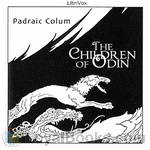 The Children of Odin
The Children of Odin
Master storyteller Padraic Colum's rich, musical voice captures all the magic and majesty of the Norse sagas in his retellings of the adventures of the gods and goddesses who lived in the Northern paradise of Asgard before the dawn of history. Here are the matchless tales of All-Father Odin, who crosses the Rainbow Bridge to walk among men in Midgard and sacrifices his right eye to drink from the Well of Wisdom; of Thor, whose mighty hammer defends Asgard; of Loki, whose mischievous cunning leads him to treachery against the gods; of giants, dragons, dwarfs and Valkyries; and of the terrible last battle that destroyed their world. | |
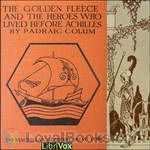 The Golden Fleece and the Heroes Who Lived Before Achilles
The Golden Fleece and the Heroes Who Lived Before Achilles
This is Irish folklorist Padraic Colum's masterful retelling of many Greek myths, focusing on Jason and the Argonauts' quest to find the Golden Fleece. He also includes the stories of Atalanta, Heracles, Perseus, Theseus, and others. | |
By: Pansy (1841-1930) | |
|---|---|
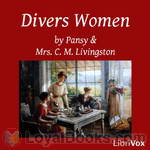 Divers Women
Divers Women
A collection of short stories, highlighting some of the best and worst characteristics we women are capable of in our Christianity and in our home life. | |
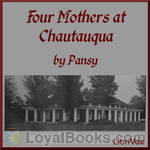 Four Mothers at Chautauqua
Four Mothers at Chautauqua
Final book in the Chautauqua Girls series. The four original girls return to Chautauqua on the 25 year anniversary of the trip that changed their lives forever. They have with them some children that could use the lessons they themselves learned there. (Introduction by TriciaG)Music for the hymn in Chapters 9 & 26 is titled "Chautauqua" by William, F. Sherman, 1877. Music for the children's song in Chapter 19 is adapted from "Love Lifted Me" by Howard E. Smith, 1912. | |
 Mag and Margaret: A Story for Girls
Mag and Margaret: A Story for Girls
Little Mag Jessup is an orphan girl who works hard as a servant in Mrs. Perkins' boarding house to earn her keep. She has no education, except what she has picked up on her own. Her future looks unchanging until she is given, on a whim, a devotional book called "Little Pillows," in which she learns that she is valuable to God as His child. She endures trials from many fronts and the prejudice of haughty, rich Margaret, with whom she has more in common than she thinks, on her journey with God. (Introduction by TriciaG) | |